How routines can help to get to 32 piglets/sow/year
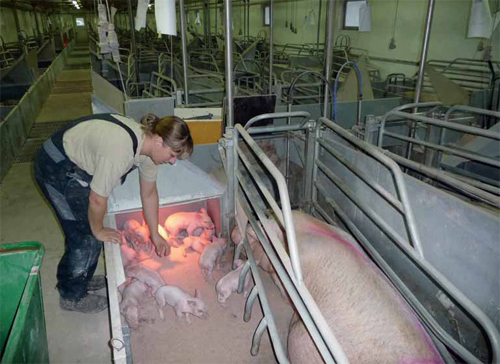
Danish Karina Mikkelsen has very steady routines in her farrowing unit leading to excellent breeding figures. She informed the audience at the latest Congress for Pig Producers (Svinekongres) in Herning, Denmark, held in October 2011. Her message: If a producer looks well after the sows, the sows will take good care of their piglets.
Karina Mikkelsen is responsible for the farrowing unit at pig farm Thaysen & Lyck near Odense, Denmark – and she is doing very well. The headline of her speech at the Svinekongres (see box) read: ‘How I wean more than 30 piglets per sow’. It should have however been ‘How I wean 32 piglets per sow’, as that is what she has been doing so far. With 15.6 live born piglets she has been weaning 14.1 per litter. How does she do it? Routines from birth until day seven.
Get up and drink!
The first element in Mikkelsen’s morning routine is to lock in all newborn piglets in creep boxes. Then she takes care of the sows that need to get up and drink some water. “It is very important that the sows get up right after they have given birth and that you take their temperature, also check if they look fresh and well. Producers should buy a fast thermometer that shows the temperature within a few seconds, even the best farm manager can’t always see if the sows are okay,” Mikkelsen told the audience.
By 8am, Mikkelsen has usually taken all temperatures and treated sows with a temperature over 39.3˚C. Cleaning the farrowing pens is the next chore on her list. “The farrowing pen has to be so clean that you want to lay there yourself. We use wood dust mixed with a hygienic powder called Staldren. We do that from day one until the fifth day, and this is the only way we can control diarrhoea,” Mikkelsen said. In her view, a clean and dry pen suppresses the spread of infectious diseases.
Spot on the back
In his part of the presentation, the veterinarian Flemming Thorup, Danish Pig Research Centre, concluded that producers have to find the smallest and slowest piglets in each pen that has ‘one piglet to many’. He said, “Piglets don’t die by accident. Surveys show that it is not the piglets which are 20% bigger that die. And it is not the piglets which are 20% more active that die. They get the most milk. So it is the smallest and slowest you have to look after.”
So this is what Mikkelsen does. She gets hold of every single piglet and finds the runts within the first five days, gives them a blue spot on their backs and marks the pen with a green peg on top, so both pen and piglet are easy to spot for that extra bit of attention. Mikkelsen said it is not always the best thing to move the runts to another pen. Often they recover by themselves.
Litter equalisation
Mikkelsen prefers to let the piglets stay with their own litter. She does, however, carry out some litter equalisation due to the large litter sizes. “I use second to fourth parity sows as nursing sows and depending on the size of their teats they get between 15 and 19 piglets each.” She continued, “18 to 19 small pigs at a sow with small teats and 15 to 16 bigger piglets if the sow have bigger teats.”
Thorup recommended that each sow should take care of at least 14 piglets; otherwise producers would need a lot of extra farrowing pens for nursing sows. After litter equalisation Mikkelsen adds a lot of bedding to the pen and leaves the heating lamp on for a minimum of four days.
Only the best
Producers ought to make a note of everything that happens in the farrowing pen, if they want to avoid making the same mistakes again – or to continue using a bad sow. Mikkelsen said, “Each sow has a data sheet hanging over the pen, and we write down everything unusual, be it positive or negative, that happens during the sow’s time in the farrowing unit.” And after the sow has left the farrowing unit, Mikkelsen spends some time at the computer to fill out the notes, so the data sheet is updated with fresh information.
Mikkelsen said for her the sow is the most important factor in the farrowing unit. “It is my job to look after the sows and keep the best sows in the herd. If the sows are feeling well and are in good shape when she gives birth she will automatically take care of the piglets.” Getting the same good results, however, takes hard work and skilled employees. It’s only the best employees at Thaysen & Lyck who are allowed to take care of the farrowing unit. So no wonder Mikkelsen ended her presentation with a rhetorical question for her audience. “I’m doing this work with all my heart – how about you?” PP
Join 18,000+ subscribers
Subscribe to our newsletter to stay updated about all the need-to-know content in the pigsector, three times a week. Beheer
Beheer

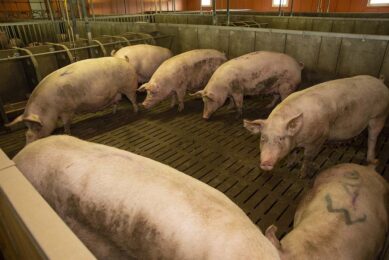
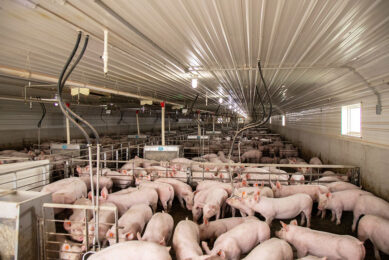
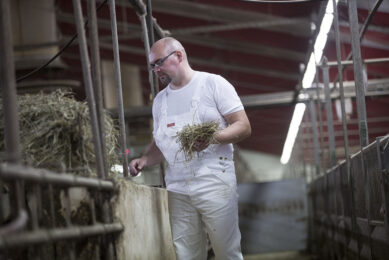
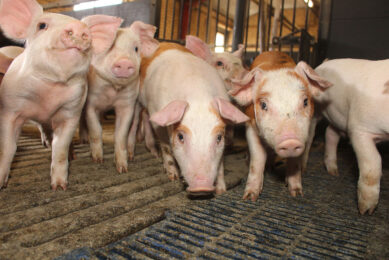





 WP Admin
WP Admin  Bewerk bericht
Bewerk bericht